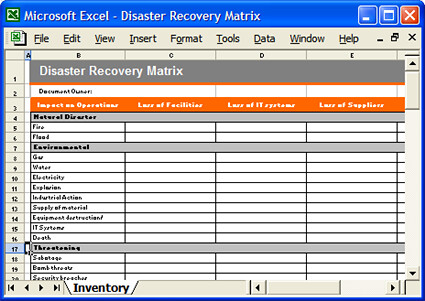Back-up and disaster recovery are absolutely essential roles for any business, especially in today's climate. Backing up data is when a company, business or individual keeps an exact, and up to date, replica of any, or all, data they have. This can be done in a variety of ways including on an external hard drive, through a hard copy, or both.

An example of an external hard drive, which some may use as back-up storage
Image source: flickr.com
Disaster recovery includes the plans, policies and procedures that are in place to ensure that a business can keep running should a disaster hit. Disaster recovery is a subsection of business continuity, and is vital to the continuation of a business if something goes wrong.
There are many errors which can be made in relation to back-up and disaster recovery; below is a short, informative guide to some of the most common. This will help ensure you don't make the same mistakes as others!
Not Realising the Risk
One of the most common mistakes is businesses not realising the risk of losing their data and failing to have provisions in place.
It is essential to consider how your business would survive If something did go wrong. Whether that's a loss of electricity for a few hours, or an extreme earthquake that demolishes the premises, you and your customers need to feel assured that you can still provide a top quality service.
Failing to put plans in place would not only affect the continuation of the service already being provided, but it would also mean that you lose everything you have worked for over the past months and years. The entire customer, employee and business data would be gone forever if you don't have a back-up and disaster recovery plan.
Just having one Back-Up and Location
Another common mistake made in relation to back-up and disaster recovery is only having one back-up copy and keeping it in the same location as the original. Having one back-up of the data is a good start, but the more back-ups you can have, the better. Storing these back-ups at different locations is also very important.
If you only have one means of back up, and that is stored in the same location as the original data, then there may be no point in having a backup at all. If something happens to the location of the original then the back-up will also be lost, rendering it pointless.
Not Testing the Back Ups and Disaster Recovery Plans
A lack of testing when it comes to back-ups and disaster recovery plans is another common failing. Many people think that everything is fine because they have back-ups and plans in place in case anything goes wrong, but it's essential to check that these actually work!
Disaster recovery plans and back-ups are very important, so you need to ensure that the ones you have in place will work effectively. Testing these is a very important part of the process, as you don't want to find yourself mid-disaster with corrupted back-ups and useless recovery techniques.

A basic disaster recovery framework plan
Image source: flickr.com
Not Planning Widely Enough or Backing Up Enough
The final common mistake in relation to back-ups and disaster recovery is not backing up frequently enough, and not preparing widely enough.
Firstly, it is very important that you back up on a regular basis. Depending on how busy your business is, and how much you do, it is wise to back up at least once a day, if not more.
You also need to ensure that the disaster recovery plans take everything into consideration that could possibly go wrong, especially the things that are the highest risk and are possibly business critical. It would be terrible to find yourself hit by a disaster with irrelevant plans that are no use at all.
Conclusion
Above are just a few of the most common mistakes in relation to back-up and disaster recovery. With this knowledge, you should be ready to approach the back-ups and disaster recovery area wisely, ensuring that you take everything into consideration.
About the author: Tom Andrews, It specialist at Cheeky Munkey in London area offering disaster recovery services. Backup services became increasingly important after various hacking scandals and new virus networks appeared. Besides disaster recovery, Tom focuses on improving web and locally based hosting.